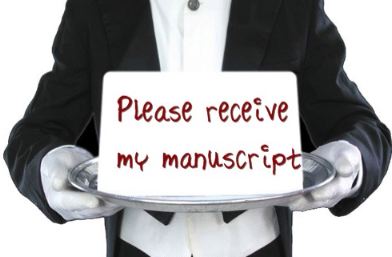2. Submitting
Three chapters and a synopsis is the industry catchcry. Since I often write very short chapters, I think in terms of about 30 pages, never more than 40. The exception is shorter fiction for younger readers, where you should submit the full MS.
 If you’re an unpublished author, then you’ll have written the book through to the end—you should’ve written the book through to the end. It probably does no harm to submit the full MS, if you want. But you still need to submit a synopsis that lays out the plot following on from the first two or three chapters. If you’re an unpublished author, then you’ll have written the book through to the end—you should’ve written the book through to the end. It probably does no harm to submit the full MS, if you want. But you still need to submit a synopsis that lays out the plot following on from the first two or three chapters.
Writing a synopsis is a pain. So much richness of characters and world and story distilled down to a mere 2-3 pages! I don’t know any author who enjoys it. I’d sooner have teeth pulled. But it has to be done—and done well.
Think how hard it is to take in a potted plot in, say, a film review. Publishers are better at it than most of us, but you should aim to be as publisher-friendly as possible. Don’t be dry, don’t be stodgy and, above all, don’t try to squeeze everything in.
Stick to the best and most important elements of your story. No one’s going to care if a few sub-stories don’t get a mention. Being clear matters; being comprehensive doesn’t. Try to communicate a strong overall storyline, one event leading to the next, with pacy language in short paragraphs.
Never worry about giving away endings or big revelations. You need to show what you’ve got to offer. People in the publishing industry don’t quite read like ordinary readers anyway.
I suggest trying out your synopsis on everyone you can rope in. What parts sound interesting? How could it be made more interesting? It may be a chore, but you need to devote yourself to it like the love of your life.
Then there’s the pitch in your cover letter. Keep it enthusiastic and hopeful, don’t try to say too much and don’t tell a publisher their own business. Think of it as a blurb for your book’s back cover.
The main thing a publisher wants to know is what kind of a book this is, where it fits in. The quickest way to signal this is by pointing to other stories: it has a similar appeal to such-and-such, the setting is a cross between this and that. You might believe your writing’s unique, but save that for later. Of course, the similarities you’ll find are only to successful stories!
A current hot success is the best of tie-ins. When a reviewer sent my first mainstream book to a publisher, he zoomed in on the fact that the relationship between the two lead characters is similar to the relationship between Mulder and Scully—and this at the very moment when The X-Files was turning into the hottest show on TV. I’d never noticed the similarity, though it’s real enough. But what a hook!
The personal touch helps too. Whether you’re submitting to a publisher, an agent or someone who might just recommend you to publisher or agent, you should never give the impression that they’re just one stop on a list of possibilities. Why this publishing house? Why this agent? Find out something about them and, without obvious flattery, work it into your cover letter.
|





